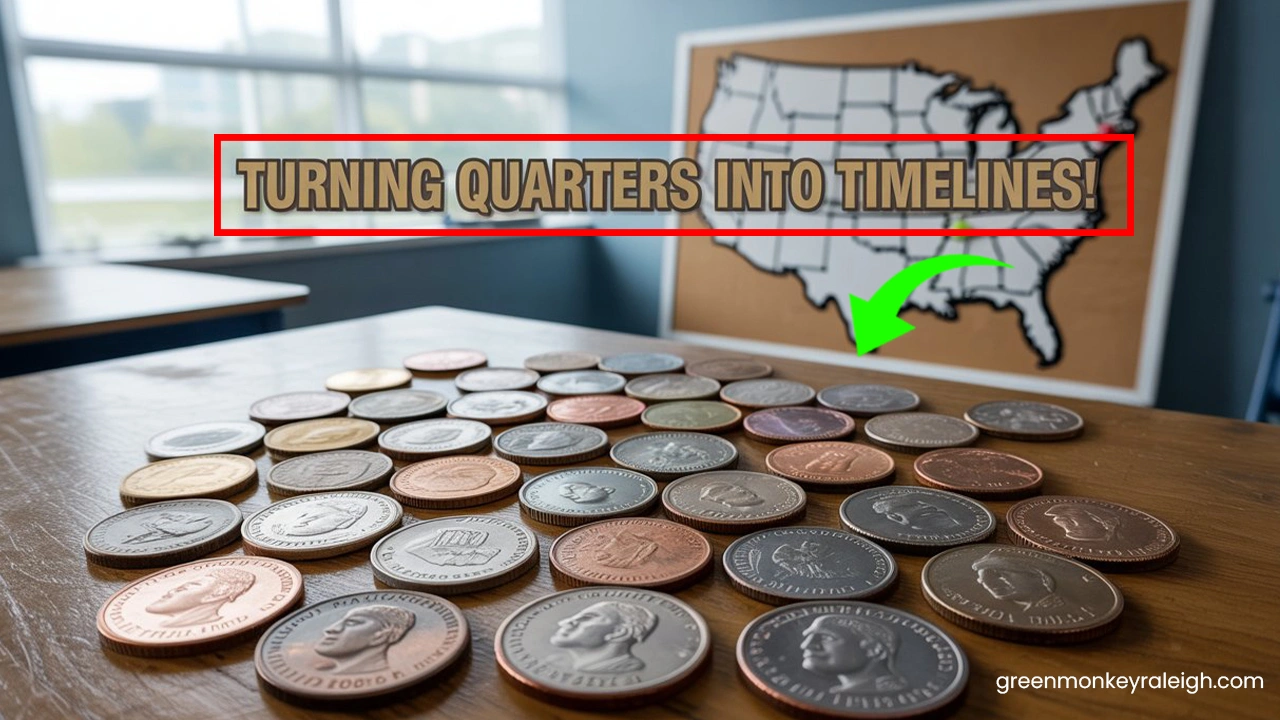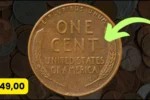Using U.S. Quarters to Create a Classroom Timeline of America’s 50 States: Learning about the 50 states of America can be a lot more exciting when there’s a hands-on activity involved. One creative way to do this is by using U.S. quarters. The State Quarters Program, launched by the U.S. Mint, released special quarters for each of the 50 states between 1999 and 2008. These coins are not just money—they tell stories about history, culture, and landmarks. Teachers can turn this into an interactive classroom project by creating a timeline that showcases all the states as they were admitted to the Union.
Why Use U.S. Quarters for Teaching?
U.S. quarters from the State Quarters Program are perfect for teaching because each one has a unique design representing its state. They feature important symbols, historical figures, or famous places. This makes them a great visual aid for students. Kids also love collecting things, so using coins sparks curiosity and makes history feel more like a treasure hunt than a boring lesson.
How to Start Building the Timeline
To begin, gather the quarters for all 50 states. You can collect them from pocket change, ask families to contribute, or purchase a full set online. Then prepare a timeline display for your classroom. It can be a large poster, a wall mural, or a long strip of paper stretching across the room. Mark the years when each state joined the Union and leave space to attach the corresponding quarter.
Bringing History to Life with Each Coin
As you add each quarter to the timeline, take time to talk about that state’s history. Discuss when and how it became part of the United States. Explore why the design on its quarter was chosen and what it tells us about that place. For example, Delaware’s quarter shows Caesar Rodney riding a horse, representing his historic ride in 1776. This turns the activity into a storytelling session, keeping students engaged.
Encouraging Student Participation
Let students take part by researching the states and presenting their findings to the class. They can share facts about the state’s geography, culture, or notable events. Assign each student a state and let them find its quarter, study its design, and explain it to their classmates before placing it on the timeline. This builds research skills and confidence in speaking.
Making the Timeline a Permanent Classroom Display
Once all the quarters are in place, the timeline becomes a beautiful and educational classroom decoration. It serves as a constant reminder of U.S. history and can be used in future lessons. Younger students will enjoy seeing the display every day, and older students can use it as a quick reference.
Adding More Learning Opportunities
The timeline can be expanded with additional information. You can add state flags, mottos, or maps alongside the quarters. Consider connecting literature, music, or food from each state to make the project even more comprehensive. This cross-curricular approach deepens students’ understanding of the diversity and unity of the United States.
Small Table: Example Timeline Entries
| State | Year Joined | Quarter Design | Symbol Meaning |
|---|---|---|---|
| Delaware | 1787 | Caesar Rodney on horseback | Represents Rodney’s 1776 ride |
| Alaska | 1959 | Grizzly bear with salmon | Nature and wildlife |
| Hawaii | 1959 | King Kamehameha and state outline | Cultural heritage and unity |
Frequently Asked Questions
Why use quarters instead of a printed map?
Quarters add a tactile element to learning. Students enjoy physically handling the coins and looking at the detailed designs, which helps them remember the information better than a simple printed map.
What if we can’t find all 50 quarters?
You can start with the ones you have and keep searching over time. Missing quarters can be drawn or printed as placeholders until the real ones are found. This creates excitement as students look for the missing pieces.
Can this project work for younger kids?
Yes, it’s great for all age groups. Younger kids will enjoy looking at the pictures and hearing stories, while older students can dig deeper into state histories and designs.



